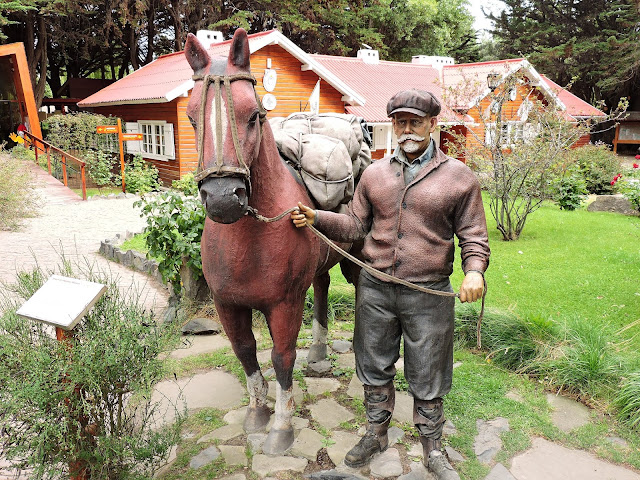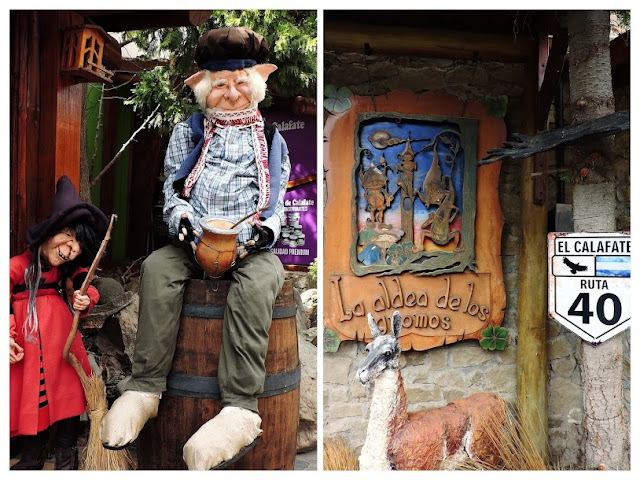El Calafate: A Portrait of Patagonian Heritage
Route 40 is a 5000 km corridor down the spine of western Argentina. Much like Route 66 in the United States, it's a romantic symbol of restlessness and wanderlust that's best suited to hardened backpackers, bikers and anyone else not put off by a bit of hardship. The lives of notable arrivals were chronicled by Bruce Chatwin in 1974 in his book called In Patagonia. These included the irascible but ill-fated Russian anarchist Simon Radowitzky. Charley Milward forged an extraordinary life at sea and on land before succumbing to bad luck. The book was an overnight success comparable to classics such as Gulliver's Travels and Out of Africa. The publicity attracted people seeking refuge from the risk of nuclear fallout during the Cold War.
The greatest Patagonian hero is the explorer and scientist Francisco Moreno (1852-1919). The obstacles he faced were enormous. It took five months to travel from Buenos Aires to Bariloche let alone further south. Captured and sentenced to death by a native tribe, he escaped on the eve of his execution. Moreno charted Patagonian geography and catalogued the flora, fauna and fossils. He skillfully negotiated the contested border with Chile. Moreno was awarded large tracts of land in 1903, most of which he donated for parks. A series of statues at the national park office in El Calafate depict his life's work.
El Calafate was once a rough frontier town at the centre of an extensive network of cattle and sheep ranches (estancias). These were worked by highly skilled nomadic horsemen known as gauchos. Their reputation for being unruly but brave was immortalized in art and literature but like many legends, is partly myth. They continue to be a source of nostalgia even if their lifestyle is now more mundane. They work on farms, conduct trail rides and deliver supplies into the mountains. We have seen them dressed in their traditional garb with facons (long knives) still tucked into the backs of their trousers.
The estancias remain an integral part of the economy and are a tourist attraction as well. Visits can be arranged to experience the traditional rural life. El Calafate's bucolic traditions are evident in the outlying areas and around town.
El Calafate's economy now depends to a large extent on the service industry with much of the downtown geared to foreign tourists, including Gnome Village with its assortment of wee folk. The population is booming, more than tripling since 2000.
The natural world is an equally important legacy for the people. The town's location on Lake Argentina makes it easy to appreciate. The shoreline is protected from development by a lengthy pedestrian walkway that provides ample views of bird life, especially black-necked swans. The black-faced ibis is also common here and throughout many parts of Patagonia.
The town takes its name from the calafate bush, a variety of barberry. Red dye is produced from the wood and the yellow flowers turn into a blue berry used in jam and candles. The calafate is rooted in local folklore which claims that anyone who eats the berries will return to Patagonia's captivating landscapes. The idea originated with two different Tehuelche tales, one a survival story about an elderly woman and the other a lesson about young love.
Another plant that is a local favourite is the retama. It's yellow flowers are as beautiful as forsythia; however, the species is not native to South America. Another exotic shrub that tolerates the dry soil and harsh winds of Patagonia well is lavender. These two bushes make a striking combination and are used liberally around El Calafate.
The main reason people come to El Calafate is to visit the Southern Patagonia Ice Field. The massive formation is 370 km long and an average of 35 km wide. It's the third largest ice sheet in the world, surpassed only by Antarctica and Greenland. The most famous of its forty-eight major glaciers is Perito Moreno in the south sector of Los Glaciares National Park. The site is ninety minutes away from El Calafate but still located on Lake Argentina.
The glacier has interesting features and calves quite regularly. It's really something to to see the huge chunks of ice breaking then crashing into the water below. This is one of the world's most phenomenal sites. For anyone who is really keen to learn more, El Calafate has the Glacarium Ice Museum. It's even designed look like a glacier! The centre provides data and videos about the formation of glaciers and their important role in climate regulation.
Our grocery shopping has mostly been at supermarkets where basics are available but little more. When we heard about a huge grocery store in El Calafate we headed off with high hopes. It was closed but I was intrigued by the eight foot barbed wire fence and windowless walls. No German Shepherds but I suspect they weren't too far off. The Fort Knox of grocery stores! What food could be so precious? Visions of peanut butter, tofu hot dogs and Ovaltine danced in my head that night. It turned out to be a warehouse - much the same stuff in larger quantities. No produce, not even the advertised apple!
It's time to move on from Argentina and we do so with some regret. The sights and people have been all we had hoped for. So much kindness and patience! It's the small things that make a big difference, such as the courtesy shown to pedestrians by drivers. Back to Chile we go for our final month on the road.























Comments
Post a Comment